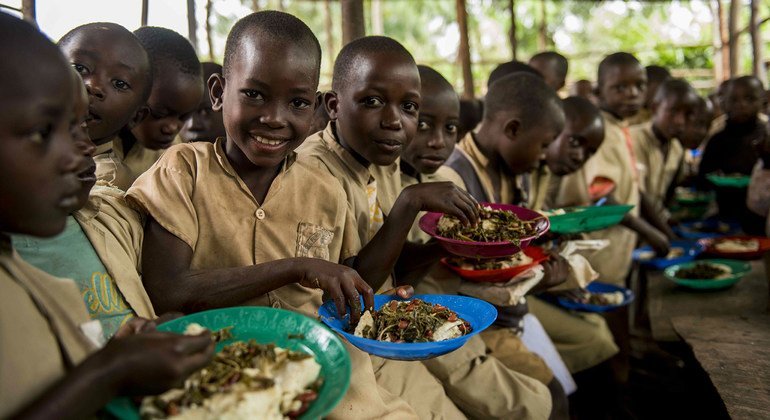[ad_1]
It is estimated that some 584 million children have limited or no access to basic drinking water services at school.
Nearly half live in sub-Saharan Africa, according to the study by the UN Educational, Scientific and Cultural Organization (UNESCO ), the UN Children’s Fund (UNICEF) and the World Food Programme (WFP).
A supportive environment
Furthermore, even though practically all countries in the world provide school meals, roughly 73 million of the most vulnerable children still do not benefit from these programmes.
“Students learn best in safe and healthy schools,” said Audrey Azoulay, the UNESCO Director-General.
Speaking on behalf of the partners, she urged the international community to support countries in investing in health, nutrition and social protection at school “because children deserve an environment where they can reach their full potential.”
Feeding young minds
School meals alone increase enrolment and attendance rates by nine per cent and eight per cent, respectively, the report revealed.
In places where anaemia and worm infections are prevalent, de-worming and micronutrient supplementation can keep children in school for an additional 2.5 years.
Additionally, students are 50 per cent less likely to skip school when the learning environment is free from violence, and absenteeism is reduced in low-income countries when promoting handwashing, particularly for girls during menstruation, when water, sanitation and hygiene is improved.
Return on investment
The report also addresses other issues such as the promotion of eyecare, mental health and well-being of children, and prevention of school violence.
Measures like these represent a significant return on investment for countries, in addition to improving the lives of children and adolescents, with benefits extending to homes and whole communities.
For example, every $1 invested in school feeding programmes generates $9 in returns, according to the report, while school programmes that address mental health can potentially deliver a return of nearly $22.
A lesson from Malawi
UNESCO spoke to Wezzie Kacheche, who teaches life skills education, also known as comprehensive sexuality education (CSE), at a secondary school in northern Malawi.
Students there increasingly dropout of school due to early and unintended pregnancy, early marriage, and drug and substance abuse.
Ms. Kaleche provides her students with appropriate information about health and sexuality, helping them to “demystify adolescence” at a time where young people get most of their information online or from their peers.
“One of the girls in my class was on the verge of dropping out of school due to her risky sexual activity and drinking habits,” she recalled. “Upon watching a video about sexually transmitted infections during my class, she came to me to seek more information privately.”
Unequal and insufficient
Currently, 90 per cent of countries globally invest in school and nutrition programmes, and more than 100 nations organise school vaccination drives, said UNESCO, pointing to some of the good news in the report.
One in two primary school children receives school meals and nearly every country includes education for health and well-being in its curriculum.
Unfortunately, investments are unequal from region to region, and are often insufficient compared to the needs. The report advocates for stronger commitment from governments and support from the international community.
Globally, investment stands at only $2 billion annually whereas some $210 billion is needed in low- and lower middle-income countries alone.
Key interventions are needed, the partners said, including provision of school meals, vaccinations, de-worming, psychosocial support, and safe and inclusive learning environments that promote health and well-being.
[ad_2]

